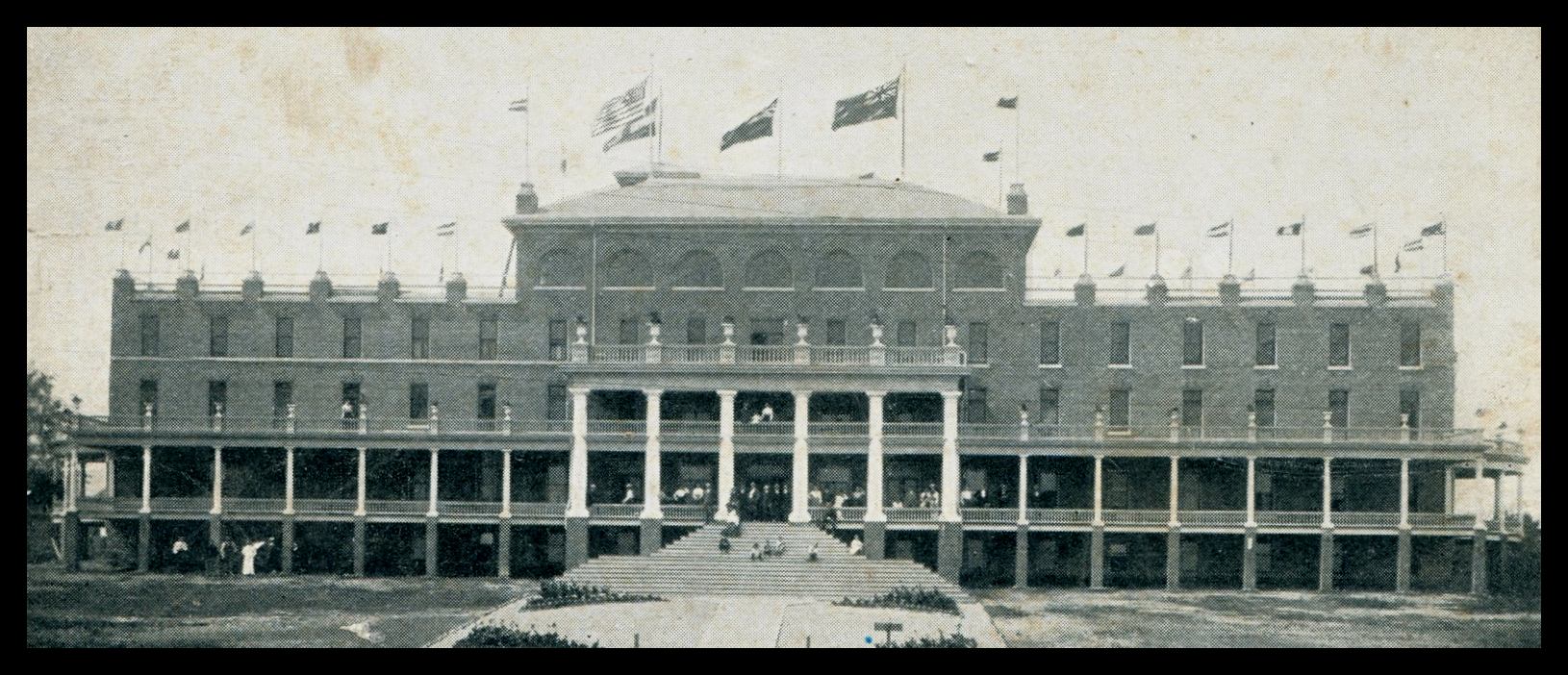 By Mark Gillies
By Mark Gillies
February 12, 2015
BURLINGTON, ON
Part 2 of a 3 part feature
Their last farewells were at Freeman Station

Private H. Kearse who lived on Brant Avenue died in World War 1. He left his wife and 3 young children in Burlington, so he could fight in France with the 86th Machine Gun Battalion. His death was reported in the newspaper before Private Kearse’s widow was officially notified. The last time this hero saw his family, was when he waved goodbye to them at the Freeman Station. When our boys left, there was not a dry eye to be found anywhere.
When Canada answered the call to go to war, Burlington did its part. One hundred years ago, as World War 1 began, with a population that was less than 2,000, Burlington sent 300 sons. We responded in World War 2, and sent even more. The boys went to defend our freedom, and the town proudly marched them up Brant Street and onto the train cars at the Freeman Station. Some did not return. Their names are remembered at the Cenotaph on the grounds of City Hall.
Before Los Vegas, there was Burlington!
Most people do not know that in the 1890s and for another 30 years, Burlington was regarded as one of North America’s hot vacation playgrounds, especially for wealthy Americans. One of Burlington’s favourite sons, A.B. Coleman, who built and lived in the “Gingerbread House” on Ontario Street, was a wealthy entrepreneur who among other business endeavours, built and owned the Hotel Brant, the Brant Inn, Burlington’s first golf course on Francis Road, and developed most of the homes at historic Indian Point, mainly for the benefit of wealthy Americans and Europeans.

The Hotel Brant was a beautiful 5 Star hotel that overlooked Lake Ontario. The developer and proprietor, Burlington’s A. B. Coleman was the man responsible for stimulating the tourist industry in Burlington. He advertised the Hotel Brant all over North America and Europe, as the perfect summer vacation destination. Tourists flocked to Burlington. Most arrived by the Grand Trunk Railway and stepped off at the Freeman Station.
The Hotel Brant, in the Garden of Canada, was advertised all across North America, and even Europe, as the perfect summer vacation destination. The 200 room hotel offered beautiful cool summer breezes, a roof garden, fishing, bathing, bowling greens, ping pong, billiards, boating, canoeing, golf, tennis, swimming, even furnished bungalows.

Wealthy Americans and Europeans were lured to the Hotel Brant by an intensive advertising campaign. This advertisement appeared in the Washington Post on July 17, 1904.
Tourists from the United States, Europe and from across Canada flocked to the Hotel Brant. How did they get here? Most came by train and disembarked at the Freeman Station. Burlington at one time, with only a population of about 1500 people had 4 train stations. One was in Tansley, one in Aldershot, and the 4th, the Burlington station, not to be confused with the Burlington Junction station, was across the street from the Brant Inn and Hotel Brant and it too received many tourists destined for the Hotel Brant. Sadly, we have demolished the Tansley station, the Aldershot station, and the Burlington station downtown, leaving only the Freeman Station for us to enjoy today.
The Hotel Brant came to its demise when the Government of Canada expropriated the building in 1917 and converted it into the Brant Military Hospital, as a facility to care for our injured soldiers returning from overseas after World War One. The Brant Military Hospital was eventually demolished. Today, it is the site of the Joseph Brant Hospital.
The Brant Inn, a world famous entertainment mecca

The Brant Inn was known all over North America and parts of Europe as a great entertainment destination. The owner A. B. Coleman brought in world class singers and musicians to entertain the patrons. If you wanted to see these performers in person, most arrived by train. Even the performers came by train to the Freeman Station.
Undaunted by the loss of the Hotel Brant, A.B. Coleman turned his attention to his other moneymaker, the Brant Inn, which was located just across the street. The historic Brant Inn which was demolished in 1969 was to become one of North America’s greatest venues for entertainment. Almost every single major musician and singer from the 1920s up to the big band era and beyond, played the Brant Inn. The Brant Inn was advertised all across North America as the place to be to see the world’s greatest entertainers perform in person. If you couldn’t get to Burlington to see your favourite entertainer live, you could always hear them on radio. Their performances were broadcast live right across North America. For those that travelled to Burlington from somewhere across North America or Europe, you usually arrived by train and stepped off at the Freeman station.

The Brant Inn received continuous publicity all over North America and Europe. This story about Ella Fitzgerald appeared in the Pittsburgh Courier on August 2, 1947.
Burlington was a famous tourist town, as well as being an agricultural community. With a population just like a village, Burlington responded to the tourist trade and had several hotels ready for weary guests. Outside of the Hotel Brant, Burlington had three more on Brant Street. You could stay at the Hotel Raymond, or the Queen’s Hotel, and if they were full, you could find accommodation at the Burlington Hotel. These were the earliest hotels, and later on, many more were built.

King George VI and Queen Elizabeth stopped at the Freeman Station in June 1939, as part of their cross Canada tour. It was the only time British Royalty had ever been to Burlington.
The Royal Family stopped to visit Burlington at the Freeman Station
King George VI & Queen Elizabeth arrived in Canada in 1939. The Royal family were invited to tour right across Canada and into the United States. This was the first time British Royalty had ever been to either country. The Royal couple in the month of June stopped in Burlington to say hello to the thousands of residents who showed up to catch a glimpse of the two as they waved to everyone while visiting at the Freeman Station. The King and Queen were on their way to St. Catharines to officially open the Queen Elizabeth Highway. For local residents, this was to be their only time to see Royalty in Burlington. The British Royal family have never returned to Burlington. It was an historic moment at Freeman Station 76 years ago.

World famous author Peter C Newman arrived with his family from Austria to the Freeman Station after World War 2 to start all over again. The ravages of war had left the family with nothing. Their new life began on a local farm in Freeman. This photo from around 1946 shows Peter in Freeman with his favourite farm horses Bob & Joe.
Welcome to Canada, your new home
Canada was founded on immigration. Burlington received not a few, but thousands of new residents over the decades. They came for many different reasons. Economic hardships in Europe, the ravages of war, new war brides, a chance to start a new life in a new land, were all catalysts that brought us these inspirational people. Most came with nothing, except the clothes they were wearing, and maybe a suitcase, and that was it. When they stepped off the train at Freeman Station, and looked around with some fear in their eyes, little did they know what was in store for them in Burlington. But, every single new immigrant will always remember the Freeman Station, where their new life began in Canada.
Tomorrow, find out what the Freeman Station symbolizes, and why it is historical.
Mark Gillies is a lifelong resident of Burlington, who grew up in Aldershot and developed as a local historian, researcher, master genealogist and writer who has a passionate interest and extensive knowledge of the many early pioneer families. Mark writes a regular column about colourful local history introducing Burlingtonians to the people that made this city what it is today.




















